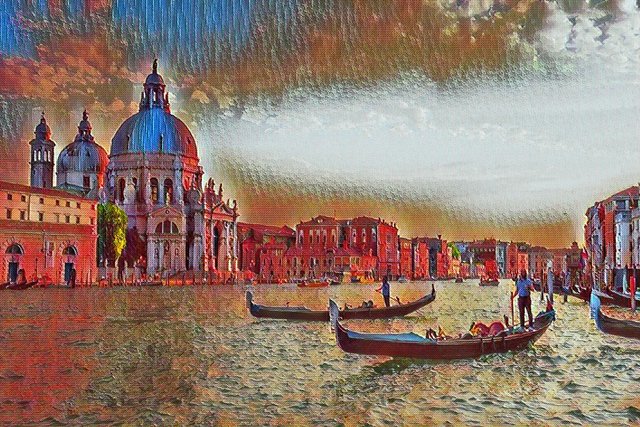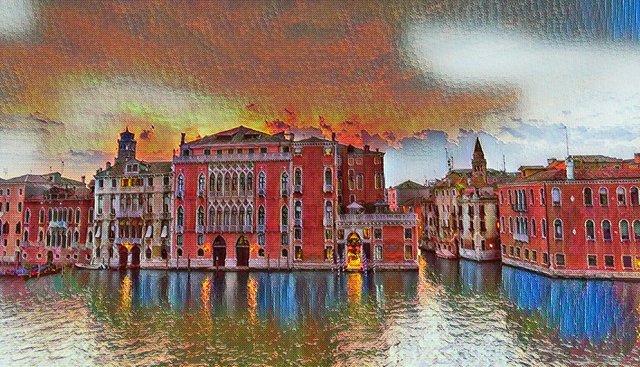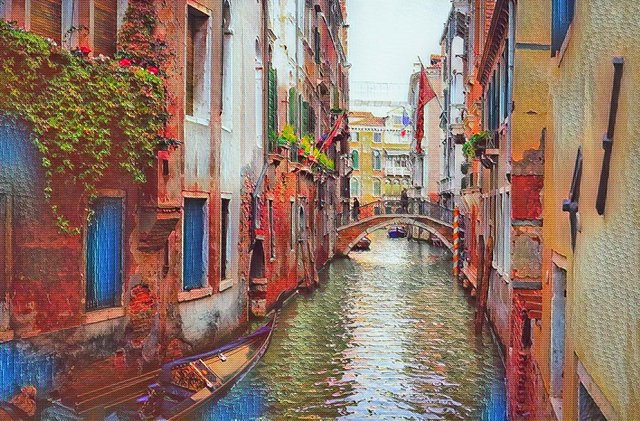Venice Is a Beautiful City: A Brief History of the City of Venice

Today, visitors to Venice marvel at the city’s beautiful Gothic churches and slender campanile. The city is world-famous for its canal-filled center and picturesque gondolas. But not so long ago, this city was a derelict fishing village rife with malaria. How did this transformation happen? With lots of help from other cities! In the 14th century, much of what was once known as Byzantium fell to various conquerors, including the Ottoman Turks and the Black Plague. The citizens who remained fled to the lagoon on the northern end of what is now known as La Serenissima (The Most Serene Republic of Venice) or simply Venice. Once a thriving shipyard and home to many prosperous merchants, it was no longer safe for business…

8th Century to 13th Century: Drowning in Debt and Malaria
By the 8th century, Venice was a bustling trade port. At its peak during the 11th century, it was home to approximately 50,000 residents, making it the largest city in Italy. The residents were all too eager to make money from their wealthy neighbors, the Venetians were frequently at war throughout their existences. As a result, Venice suffered several humiliating defeats and was left with an incredibly high debt that it struggled to pay off for many years. Venice’s location near the sea and its close proximity to the Black Plague-infested East also made it susceptible to an abundance of diseases. Malaria, a mosquito-borne illness that causes flu-like symptoms and can be fatal if not treated, was high on the list. Not only did it make it difficult for the Venetians to travel, it also made it extremely difficult for them to make money. By the end of the 12th century, Venice was at the brink of collapse.

14th Century: A New Hope for Venice
In the late 13th century, a new hope for Venice emerged. The people of Genoa, a city whose main source of income was the same trading that Venice had become so renowned for, came to the aid of the Venetians with guns blazing. The Genoese had heard about the Venetian’s trouble with their Lombardian neighbors and wanted to take advantage of their weakened state. The Genoese were about to take over the trade market when the Black Plague struck Genoa, killing approximately half of the city’s population. The Genoese were forced to retreat and once again, it was Venice that benefited from the misfortune of others. The city was able to trade once more, and it again rose in power. As a result of the plague, Venice had even more room for growth, and the population increased dramatically. But this sudden increase in population brought an abundance of new diseases, including malaria. The environment of the lagoon was ideal for the spread of malaria.
15th Century: The Renaissance Arrives in Venice
Venice’s abundance of water made it much easier to travel, trade and live. Even though Venice was not much more than a series of ramshackle buildings, it was still a far better place to live than many other cities in Europe. But it was still a long way from being a cultural and financial capital. For this to happen, Venice needed to get its sea legs back. The Venetians had used their boats often enough to become quite skilled at sailing. But they had not ventured far from the safety of their home port in centuries. With their newly regained wealth, the Venetians built new ships and ventured farther away from Venice than had ever been done before. They were looking for new places to trade, new exotic items to send back to their people and new places to visit. And so, with their newly built ships and the best sailors at their helm, the Venetians set out for new lands. This marked the beginning of the Renaissance in Venice.
16th-19th Centuries: The Decline of Venice
While it was Venice’s beauty, charm and brains that had made it such a powerful city, it was ultimately its beauty that did it in. Venice’s government was a democracy and while it had worked well in the past, it was not designed to expand. The people did not want to change their system of government and build a larger city, so they stayed exactly where they were. The rest of Europe was changing. New technology was being developed, commerce was being taken over by the British and new powers, such as France and Prussia, were rising. Venice’s wealth, which had once been a major source of power, was now being drained. The Serenissima’s senators were still not interested in changing their government. Most other European rulers were not interested in Venice’s riches either. They had their sights set higher and no longer wanted to deal with Venice. This marked the beginning of the end for the once-great city.
Venice Is a Beautiful City: Conclusion
This brief history of Venice shows that this city’s rise to power and fall both came about due to the misfortune of others. Venice was once a small fishing village that was rife with malaria. It rose to power in the 15th century due to the decline of other cities. Many of these cities were suffering because they were simply more interested in themselves than Venice. And this is likely to be true for every city. Each city has a history that brought it to the place it is today, and these histories may be able to tell us a lot about our own city. If you want to know more about the history of any city, you can find many online sources, including museums, libraries and even local newspapers. Many cities have rich histories, and one of the best ways to learn about them is to follow their history. You may find out things about your city that will surprise you.